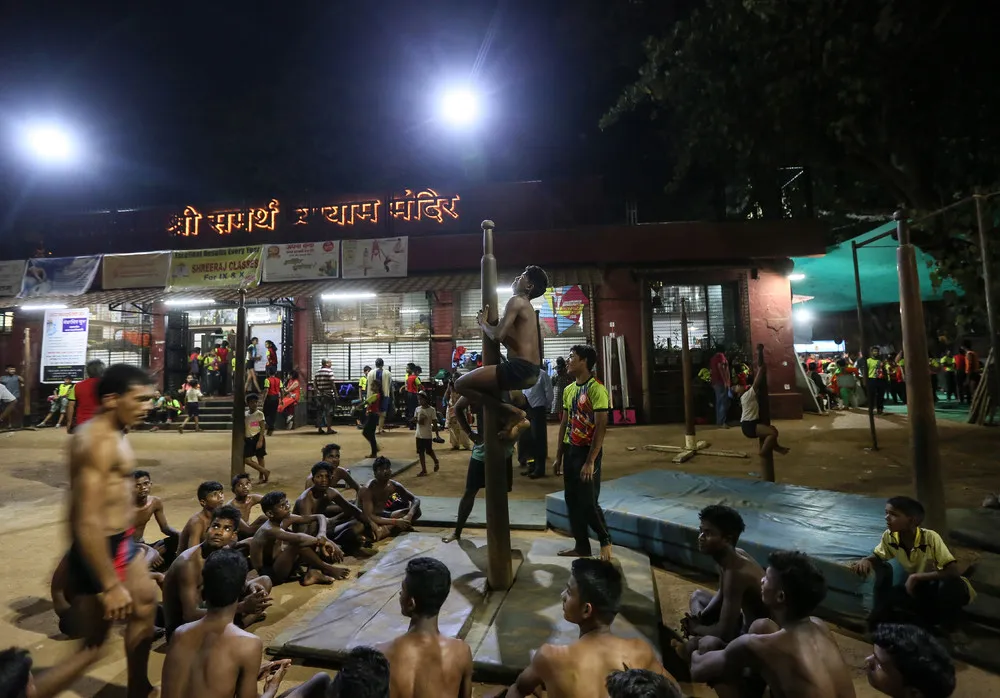|
A student practices during a training session of the Pole Mallakhamba, during the 44th Samartha Summer Sports Coaching Camp organized by Shree Samarth Vyayam Mandir in Mumbai, India, 23 April 2018. Mallakhamba arose in the western state of Maharashtra centuries ago. It was originally practiced by wrestlers and soldiers as a strength training exercise. “˜Malla” means “wrestler” and “khamb” means “pole” in Marathi, though the term is the same in Kannada and Tamil. It is a sport of strength and power, which provides a complete exercise for the entire body in a short period of time. Mallakhamba requires the strength of wrestling and the flexibility of gymnastics and yoga, and practitioners must combine those elements to perform aerial yoga poses while gripping a vertical pole. The pole is made of Seesham (Indian Rosewood) and polished with castor oil to reduce friction and minimize the risk of injury. There are three main variations of Mallakhamba: pole Mallakhamba, hanging Mallakhamba and rope Mallahkhamba. With the pole type, performers do acrobatic feats and pose on a 10-12 foot high wooden pole, fixed into the ground. The pole is 5 to 6 inches in diameter at the bottom and narrows to 1.5-2 inches in diameter at the top. Hanging Mallakhamba involves a swinging pole. The performers display their acrobatic tricks on a short pole, which is suspended by rope or with chains and hooks. The pole hangs 3 to 4 feet above the ground. Rope Mallakhamba replaces the pole with a rope, which the performers hold onto while doing acrobatic maneuvers. The rope is 5.5 meters long and 1-2 centimeters in diameter. (Photo by Divyakant Solanki/EPA/EFE)
|

